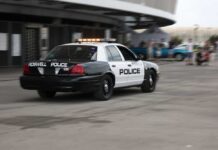The chief of the disaster management agency didn’t go to Maui last August during the crisis caused by a series of unforeseen wildfires. According to a report issued by the Hawaii Attorney General’s office, a communications failure prevented authorities from receiving information and prevented citizens from receiving emergency notifications. After the fires had done extensive damage, the Hawaiian Electric Company authorities still couldn’t certify that the power lines’ power had been cut due to communication issues. The worst U.S. wildfire in a century has been the subject of two significant assessments this week.
Meteorologists warned five days before the fires that strong winds from a cyclone south of Hawaii might cause significant wildfire danger on August 8, according to a study issued on Wednesday. Multiple districts had already been evacuated when the flames reached Front Street, the commercial core of Lahaina. Reports indicated that 29 power poles in Lahaina were brought down. There has been persistent resistance from the agency’s EOC regarding investigators’ repeated requests for incident activity logs and other data.
The report says that when mobile networks went down, communication broke down among emergency authorities, firemen, and police. Firefighters and police had to use automobiles or handheld radios to converse on private channels that no one else could hear. In an overburdened dispatch center, a single operator often maintained an eye on five or six channels simultaneously.
Additionally, firemen were ensnared when one engine failed, and another was wrecked. According to Hawaiian Electric, a fallen power line near Lahaina caused a fire early on August 8th. When a utility worker finally showed up at midday to verify that the electrical wires had been de-energized, the firefighters were still putting out the fire. Had the worker been able to verify that the power had been turned off upon his arrival, firefighters would have been better equipped to gauge the danger of re-ignition and additional downed wires.
A timeline of the Lahaina fire was pieced together by scouring social media and analyzing information from citizen-made videos, emergency communications, dispatch records, and other sources. It is part of the first step of an exhaustive evaluation by the attorney general. The second part of the investigation will center on the operation of Maui’s fire protection system, including the factors that contributed to the fire, efforts to contain it, and evacuations.














